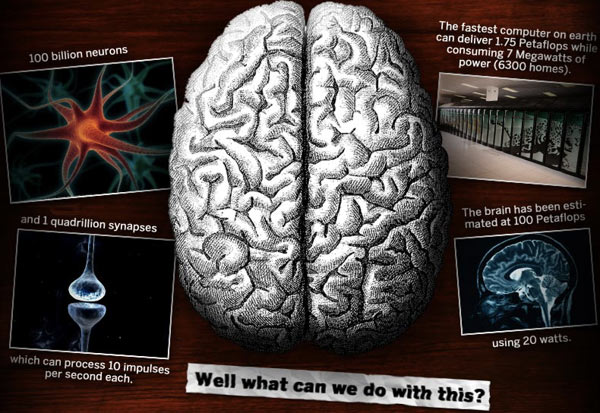The Misconception: When your emotions run high, people can look at you and tell what you are thinking and feeling.
The Truth: Your subjective experience is not observable, and you overestimate how much you telegraph your inner thoughts and emotions.
 You stand in front of your speech class with your outline centered on the lectern, your stomach performing gymnastics.
You stand in front of your speech class with your outline centered on the lectern, your stomach performing gymnastics.
You sat through all the other speeches, tapping the floor, transferring nervous energy into the tiles through a restless foot, periodically wiping your hands on the top of your pants to wick away the sweat.
Each time the speaker summed up and the class applauded, you clapped along with everyone else, and as it subsided you realized how loud your heart was thumping when a fresh silence settled.
Finally, the instructor called your name, and your eyes cranked open. You felt as if you had eaten a spoonful of sawdust as you walked up to the blackboard planting each foot carefully so as not to stumble.
As you begin to speak the lines you’ve rehearsed, you search the faces of your classmates.
“Why is he smiling? What is she scribbling? Is that a frown?â€
“Oh no,†you think, “they can see how nervous I am.â€
I must look like an idiot. I’m bombing, aren’t I? This is horrible. Please let a meteor hit this classroom before I have to say another word.
“I’m sorry,†you say to the audience. “Let me start over.â€
Now it’s even worse. What kind of moron apologizes in the middle of a speech?
Your voice quavers. Flop sweat gathers behind your neck. You become certain your skin must be glowing red and everyone in the room is holding back laughter.
Except, they aren’t.
They are just bored. Your anxiety is peaking, and it feels like waves of emotional energy must be radiating from your head like some sort of despair halo, but there is nothing to see on the outside other than your facial expressions. Keep those under control and you are home free.
“If you’re quiet at a party, people don’t know if it’s because you’re arrogant and you think you’re better than everyone else or because you’re shy and don’t know how to talk to people…but you know, because you know your thoughts and feelings. So things like anxiety, optimism and pessimism, your tendency to daydream, and your general level of happiness—what’s going on inside of you, rather than things you do—those are things other people have a hard time knowing.â€
- Simine Vazire from a 2009 interview in Psychology Today conducted by Sam Gosling
To get information out of one head and into another, it has to be transmitted through some sort of communication. Faces, sounds, gestures, words like the ones you are reading now – we must depend on these clunky tools because no matter how strong an emotion or how powerful an idea, it never seems as intense or potent to the world outside your mind as it does to the one within.
This is the illusion of transparency.
You know what you are feeling, what you are thinking, and you tend to believe those thoughts and emotions are leaking out of your pores, visible to the world, perceivable to the outside.
You overestimate how obvious what you truly think must be and fail to recognize other people in your life are in their own bubbles, thinking the same thing about their inner worlds.

Source: tvtropes.org
When you try to imagine what other people are thinking, you have no choice but to start from inside your noggin. In there, with your perturbations pushing up against you, among your inescapable self, you think your thoughts and feelings must be evident.
Sure, when people are paying attention, they can read you to an extent, but you grossly overestimate how much so.
You can test the illusion of transparency using a method created by Elizabeth Newton.
Pick a song everyone knows, like your national anthem, and have someone else sit across from you. Now, tap out the song with your fingertips.
After a verse or two, ask the other person what you were tapping.
In your mind, you can hear every note, every instrument. In their mind, they can hear your fingers tapping.
(If you record a video performing this experiment yourself and post it on YouTube, I’ll add it to this post if you send me the link.)
Pause here and try it out. I’ll wait.
Ok. I’m going to assume you’ve been tapping. How did you do? Did they figure out what you were trying to play?
Probably not. How confident were you? Was it frustrating?
In Newton’s study, the tappers predicted the listeners would be able to guess the tune half of the time, but the listeners correctly guessed about 3 percent of the songs.
The rich, complex experience of being you is impossible to see. Your subjective experience is wholly unobservable to anyone but yourself.
Yet, much of the time, you assume this isn’t so, that what you think and feel must be apparent.
The huge discrepancy between what you think people will understand and what they really do has probably lead to all sorts of mistakes in text messages and emails.
If you are like me, you often have to back up and restate your case, or answer questions about your tone, or reword everything and try sending it again.
We always know what we mean by our words, and so we expect others to know it too. Reading our own writing, the intended interpretation falls easily into place, guided by our knowledge of what we really meant. It’s hard to empathize with someone who must interpret blindly, guided only by the words.
- Eliezer Yudowsky from Lesswrong.com
On the Internet, people often include “/s†at the end of a statement to indicate sarcasm. It was so hard to communicate tone online we had to create a new punctuation mark.
Getting an idea out of one head and into another is difficult, and much can be lost in the information transfer. An insight which slams into you like an avalanche won’t have the same impact coming out of your mouth or fingertips.
In 1998, Thomas Gilovich, Victoria Medvec and Kenneth Savitsky published their research on the illusion of transparency in The Journal of Personality and Social Psychology.
They reasoned your subjective experience, or phenomenology, was so potent you would have a hard time seeing beyond it when you were in a heightened emotional state.
Their hypothesis was based on the spotlight effect – the belief everyone is looking right at you, judging your actions and appearance, when in reality you disappear into the background most of the time.
Gilovich, Medvec and Savitsky figured the effect was so powerful it made you feel as if the imaginary spotlight could penetrate your gestures, words and expressions and reveal your private world as well.
They had Cornell students divide into groups. An audience would listen as individuals read questions from index cards and then answered them out loud. They either lied or told the truth based on what the card said to do on a label only they could see.

Source: Ms L
Audience members were told they would get prizes based on how many liars they detected.
Liars would say something like, “I have met David Letterman.â€
They then had to guess how many people could tell they had lied while the audience tried to figure out who out of the five was fibbing.
The results? Half of the liars thought they had been caught, but only a quarter were – they strongly overestimated their transparency.
In subsequent experiments the variables were shuffled around and the lies presented in other ways; the results were nearly identical.
Studies all throughout the 1980s showed you are confident in your ability to see through liars, yet you are actually terrible at it. On the other side, you think your lies will be easy to detect, that you are more transparent than you are.
Gilovich, Medvec and Savitsky moved on to another experiment.
They sat students down in front of a video camera and a row of 15 cups filled with red liquid. They asked to students to hide their expressions as they tasted the beverages because five of the drinks were going to be rat nasty.
They then had 10 people watch the tape and asked the students who did the tasting to estimate how many of the observers would be able to tell when they had imbibed something gross.
On average, they guessed about half of the observers would see their revulsion, but only 3.5 percent could.
Pushing ahead, they tried another experiment based on the research of Miller and McFarland on the bystander effect (the more people who witness an emergency, the less likely any one person will leap into action).
“When confronted with a potential emergency, people typically play it cool, adopt a look of nonchalance, and monitor the reactions of others to determine if a crisis is really at hand. No one wants to overreact, after all, if it might not be a true emergency. However, because each individual holds back, looks nonchalant, and monitors the reactions of others, sometimes everyone concludes (perhaps erroneously) that the situation is not an emergency and hence does not require intervention.â€
- Gilovich, Medvec and Savitsky from their study of The Illusion of Transparency
Once again, their research showed when people were in a situation in which they felt concerned and alarmed, they assumed it was written all over their faces when it reality it wasn’t. In turn, they thought if other people were freaking out, they would be able to see it.
In 2003, Kenneth Savitsky and Thomas Gilovich conducted a study to determine if they could short-circuit the illusion of transparency.
They had people give public speeches on the spot and then rate how nervous they thought they looked to their audience. Sure enough, they said they looked like a wreck, but the onlookers didn’t notice it.
Still, in this experiment some people got stuck in a feedback loop. They thought they appeared nervous, so they started to try and compensate, and then they thought the compensation was noticeable and tried to cover that up which they then felt was more obvious, and so on until they worked themselves up into a state where they were obviously freaking out.
They decided to run the experiment again, but this time they explained the illusion of transparency to some of the subjects, telling them they might feel like everyone could see them losing it, but they probably couldn’t.
This time, the feedback loop was broken. Those told about the illusion felt less stressed, gave better speeches and the audiences said they were more composed.
Our results thus lend credence to the notion that “the truth can set you freeâ€: Knowing the truth about the illusion of transparency set participants free from the cycle of anxiety…
- Kenneth Savitsky and Thomas Gilovich
When your emotions take over, when your own mental state becomes the focus of your attention, your ability to gauge what other people are experiencing gets muted. If you are trying to see yourself through their eyes, you will fail.
Knowing this, you can plan for the effect and overcome it.
When you get near the person you have a crush on and feel the war drums in your gut, don’t freak out. You don’t look as nervous as you feel.
When you stand in front of an audience or get interviewed on camera, there might be a thunderstorm of anxiety in your brain, but it can’t get out; you look far more composed than you believe. Smile.
When your mother-in-law cooks a meal better fit for a dog bowl, she can’t hear your brain stem begging you to spit it out.
If you are trying to communicate something complex, or you have vast knowledge of a subject someone else does not, realize it is going to be difficult to put yourself in their shoes. The explanation process may become thorny, but don’t take it out on them. Just because they can’t see inside your mind doesn’t mean they are not so smart.
You don’t suddenly become telepathic when angry, anxious or alarmed. Keep calm and carry on.
Links:
The Speech Anxiety Study
The Illusion of Transparency Study
The Illusion of Transparency and Language at Lesswrong.com
Mixed Signals from Psychology Today








 How do you take the social web by storm in a day, winning over even the coldest of hearts and gaining international acclaim - with commercials?
How do you take the social web by storm in a day, winning over even the coldest of hearts and gaining international acclaim - with commercials?  "In the room there are two social media guys and a tech guy who built a system pulling in comments from around the web all together in real time," Tait says. (Right: Inside the studio, around noon today.)
"In the room there are two social media guys and a tech guy who built a system pulling in comments from around the web all together in real time," Tait says. (Right: Inside the studio, around noon today.)








